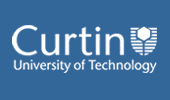Area: | School of Public Health |
Credits: | 25.0 |
Contact Hours: | 3.0 |
Lecture: | 1 x 3 Hours Weekly |
Syllabus: | Provides the basis for understanding the health problems of children in lower income countries and models for the provision of primary health care systems to address these problems. Case studies will be used to illustrate differing approaches to the provision of maternal and child health services. Explores the determinants of child health in lower income countries, the history of maternal, child and adolescent health, health status of mothers, and child development. The management of specific conditions of childhood and adolescence using the World Health Organisation guidelines on essential drugs and ethical issues in primary health care will be discussed. |
| |
Unit Outcomes: | On successful completion of this unit, students will be able to- Demonstrate a knowledge of the major causes of morbidity and mortality in children, especially in lower income countries. Review and analyse the nutrition status of children. Demonstrate knowledge of treatment using the 'essential drugs' as defined by the World Health Organisation. Described the role of health promotion in the prevention of morbidity and mortality in children of lower income countries. Appreciate the role of different health practitioner categories in the provision of primary health care for children and their mothers. Described the special needs of children in primary health care, including immunisation. |
Texts and references listed below are for your information only and current as of September 30, 2003. Some units taught offshore are modified at selected locations. Please check with the unit coordinator for up-to-date information and approved offshore variations to unit information before finalising study and textbook purchases. |
Unit References: | K. Shein, B.B. Gaitonde (2000), Essential drugs for primary health care: A manual for health care workers. Third edition. SEARO Regional Health papers, No. 16. v + 128 pages [E]. ISBN 92 9022 185 2. Management of the child with a Serious Infection or Severe Malnutrition Guidelines for Care at the first-referral level in developing countries (2000), xiii + 162 pages. ISBN 92 4 1545313. WHO report (1987), The community health worker working guide, guidelines for training, guidelines for adaptation. 463 pages. ISBN 92 4 1506097 5. World Health Report (2002). World Health Organisation, Geneva. World Development Report (2002). World Bank, Washington. The state of the world's children (2002). UNICEF, New York. |
Unit Texts: | Karis Lankinen et al. (1994), Health and disease in developing countries. Basingstoke, Macmillan. David Werner with Carol Thuman and Jane Maxwell (1996), Where there is no doctor. San Francisco, Hesperian Foundation. |
| |
Unit Assessment Breakdown: | Continuous assessment 60%, Final assignment 40%. This is by grade/mark assessment. |
Field of Education: | 61300 Public Health (Narrow Grouping) | HECS Band (if applicable): | 2 |
|
Extent to which this unit or thesis utilises online information: | Informational | Result Type: | Grade/Mark |
|
AvailabilityAvailability Information has not been provided by the respective School or Area. Prospective students should contact the School or Area listed above for further information.
|

